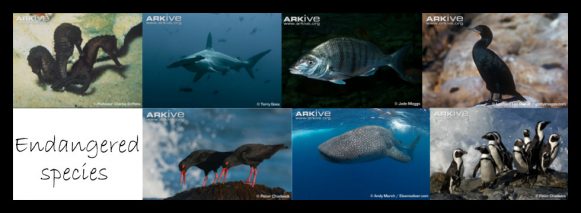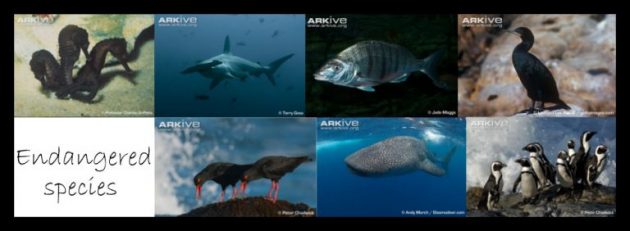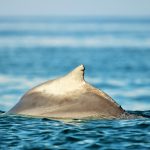Endangered Species Day

International Endangered Species Day is celebrated every third Friday in May, and this year it fell on 19th May. Endangered Species Day is a chance for us to recognize and appreciate the conservation efforts being put in by a number of organisations, men, and women around the world working to protect our endangered species and their habitats. Endangered Species Day gives us a chance to reflect on our lifestyles, and highlight ways in which we can alter our behaviour in small ways on a daily basis in order to help protect these creatures.
Here in our beautiful Plettenberg Bay we are blessed with incredible biodiversity, unfortunately with several species facing extinction. The species gaining the most attention currently is the African penguin Spheniscus demersus as it is in dire straits, and investigations into setting up a breeding colony in Plettenberg Bay may prove pivotal to the survival of the species.
We are also fortunate to have a breeding colony of both Cape cormorants Phalacrocorax capensis (Endangered) and African black oystercatchers Haematopus moquini (Near Threatened) here in Plettenberg Bay. Not to forget the Knysna seahorse Hippocampus capensis and white steenbras Lithognathus lithognathus in our Keurbooms Estuary, among others species living in Plettenberg Bay.
We also have proof of a conservation success story visiting our bay every year, the Southern right whale Eubalaena australis! Hunted near to extinction the species is believed to be still be increasing in numbers, and is classified as Least Concern according to the IUCN.
Unfortunately, human activities have negatively affected many species, and Endangered Species Day is a chance to share your knowledge and support for conservation, determine ways to minimise your ecological and carbon footprint, and appreciate the incredible natural world we share! Ultimately, we don’t need to love, or even like, a species to be able to appreciate and respect its role in the ecosystem that supports us!
Written by: Minke Witteveen
For further reading:
- BirdLife International. 2016. Haematopus moquini. The IUCN Red List of Threatened Species 2016. Accessed: 2017-05-20. URL: http://www.iucnredlist.org/details/22693627/0.
- BirdLife International. 2017. Phalacrocorax capensis. The IUCN Red List of Threatened Species 2017. Accessed: 2017-05-20. URL: http://www.iucnredlist.org/details/22696806/0.
- BirdLife International. 2016. Spheniscus demersus. The IUCN Red List of Threatened Species 2016. Accessed: 2017-05-20. URL: http://www.iucnredlist.org/details/22697810/0
- Czembor, C.A. & Bell, E.M. 2012. Hippocampus capensis. The IUCN Red List of Threatened Species 2012. Accessed: 2017-05-20. URL: http://www.iucnredlist.org/details/10056/0.
- Mann, B.Q., Buxton, C.D., Pollard, D., Carpenter, K.E. & Iwatsuki, Y. 2014. Lithognathus lithognathus. The IUCN Red List of Threatened Species 2014. Accessed: 2017-05-20. URL: http://www.iucnredlist.org/details/12137/0
- Reilly, S.B., Bannister, J.L., Best, P.B., Brown, M., Brownell Jr., R.L., Butterworth, D.S., Clapham, P.J., Cooke, J., Donovan, G.P., Urbán, J. & Zerbini, A.N. 2013. Eubalaena australis. The IUCN Red List of Threatened Species 2013.



